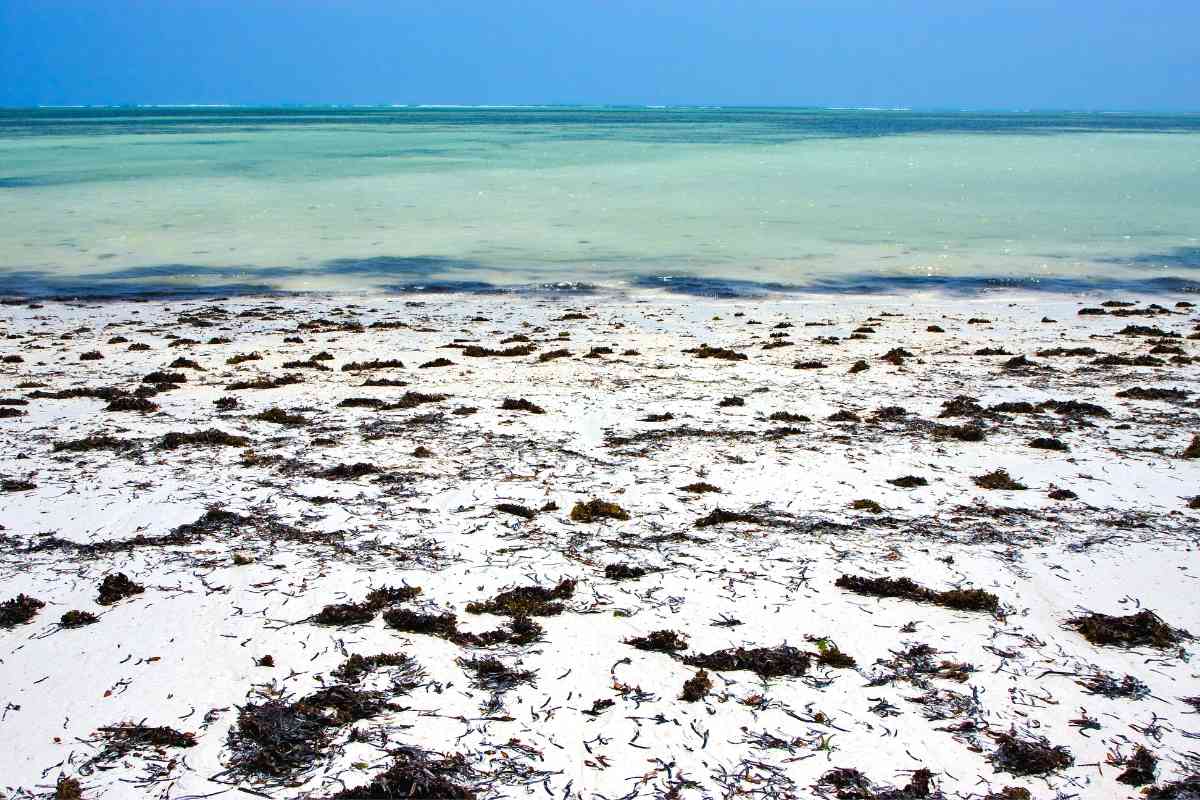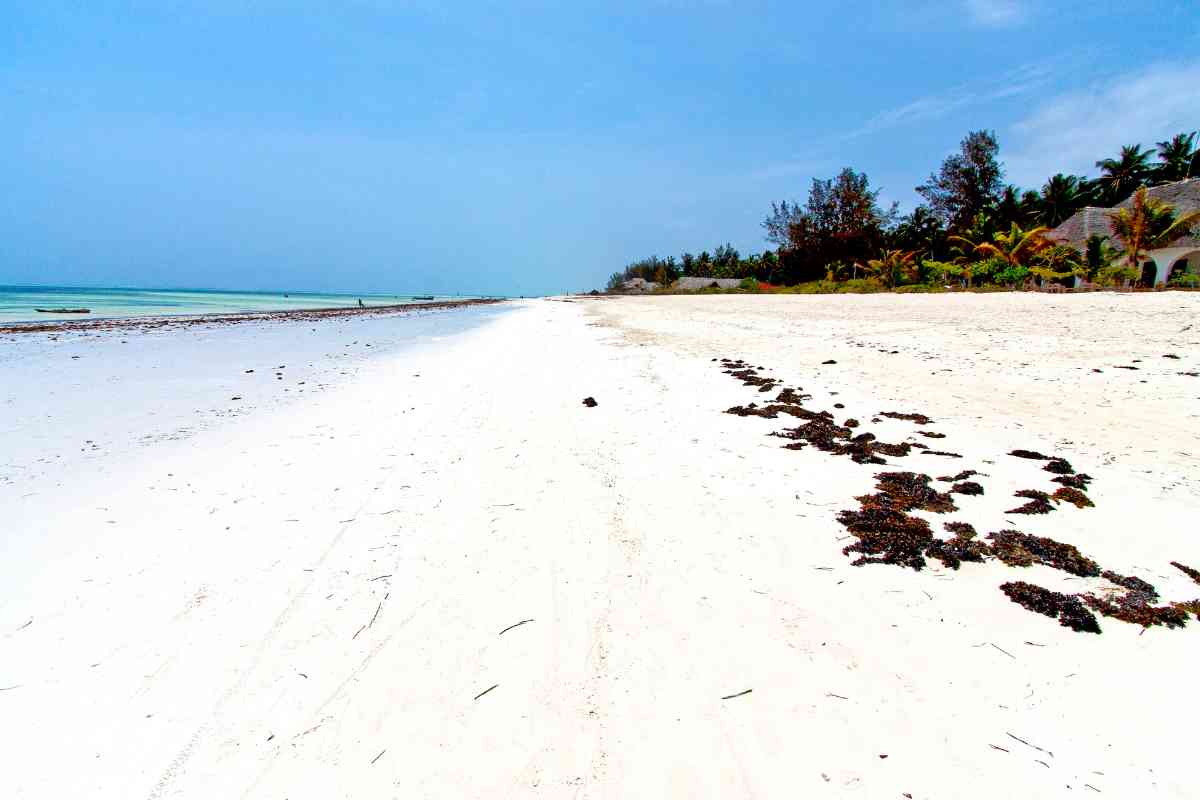The Ultimate Guide To Seaweed On Cancun Beaches
As a traveler, there is nothing worse than heading to the beach in Cancun, Mexico only to discover thick layers of seaweed covering the shore. Here is your guide to avoiding it!

Is There Seaweed On Cancun Beaches?
While seaweed can occur on beaches around the world, why does it seem like Cancun is particularly prone to this issue? To avoid it, you should know which seasons tend to have more and which tend to have less, as well as which beaches get the worst of it.
Having traveled to the Yucatan Peninsula regularly, one item of conversation that never relents is: how is the seaweed on the beaches right now? However, the seaweed issue in Cancun and the surrounding beaches is no mystery. Let’s take a closer look at why so much seaweed accumulates on Cancun beaches and when you can expect to find the least amount of seaweed for your beach vacation.
How To Avoid Seaweed In Cancun
Cancun’s beaches are world famous – pillowy sands and cerulean waters cover brochures. None of them will tell you that there are entire months when seaweed can blanket the shorelines.
Unfortunately, we’re not talking about small clumps but rather sweeping blankets of rubbery brown seaweed.
The seaweed that rolls in with the waves and plants itself on shore can be up to 5 kilometers in length, gives off a pungent odor, and attracts meddlesome sand flies.
Fortunately, there is a strategy to avoid the seaweed plague.

Where Does It Come From
Seaweed (sargassum) is a natural part of the ocean ecosystem.
The macroalgae that arrives on Cancun’s shores is different from traditional seaweed in that it forms in large island “flotillas” hundreds of miles out from shore that, with the right conditions, will move to the beaches.
Why is There So Much Seaweed On Cancun’s Beaches
So we know this is a natural phenomenon in Cancun, but why does it seem to be worse in some seasons than others? No one knows for sure, but here are some of the contributing factors.
- Global Warming: Seaweed is a tropical plant that will experience periods of “bloom” in warmer temperatures.
- Pollution: Fertilizers often end up in “runoff” that heads for the ocean. These nutrient-dense waters trigger “blooms.”
- Winds and Storms: Higher incidences of storms and high wind patterns have resulted in more seaweed on the shorelines.
What Season is Best To Avoid Seaweed In Cancun
The short answer is from October to May. This mainly has to do with ocean temperatures, gyres, and wind patterns.
Northern winds during this time tend to kick up and push the sargassum offshore.
While you can predictably get a pretty clear beach during these months, it’s best to check the local sargassum reports (see resources below).
For example, in 2023, authorities reported early seaweed arrivals on the beaches in Cancun and surrounding areas.
They ascertain this is because a number of “islands” of the seaweed have been built in the Caribbean Sea just a few miles parallel to the coast of the Riviera Maya.
Some of these “flotillas” are reportedly up to 25 miles long, making it only a matter of time before they arrive on Cancun shores.

Which is the Worst Season For Seaweed on Cancun Beaches
Due to the same conditions listed above, water temperatures, wind patterns, and ocean gyres May to August, when seaweed generally starts to come in mass.
It’s not absolute and takes the right conditions. However, these are months you should start looking at beach reports to determine where you will stay on vacation. The situation heavily depends on the yearly weather patterns
That is to say, don’t cancel your trip, but some beaches are better than others to avoid the macroalgae invasion during this time.
Which Cancun Beaches Are The Best To Avoid Seaweed
While it’s not a certainty, some beaches are optimally positioned to avoid a sargassum onslaught.
Strategically facing the currents that bring seaweed, they tend to miss the worst of it.
The best places to stay to avoid seaweed are the west-facing beaches around Cancun. They include:
- The west coast of Isla Mujeres
- The west coast of Cozumel
- Island of Holbox
- Playa Mujeres
- Coral Beach
- Playa Gaviotas
Resources To Check Before Travel

The Yucatan Peninsula depends on tourism. While they can’t stop the onslaught of seaweed, they can give you a forecast to avoid it.
There are several resources that you can use to track the seaweed season.
The Federal Maritime Terrestrial Zone and Quintana Roo Sargasso Network puts out a map and forecast each year to help visitors plan.
Another great resource is The Quintana Roo Sargasso Monitoring Network. While the former is great for predictions, this site is better for real-time monitoring in case you want to switch Cancun resorts at the last minute to find a clearer beach destination.
What Is Cancun Doing About the Seaweed
The truth is that it is the tourism industry’s worst nightmare to hear that it will be a heavy sargassum season.
To be fair, there is not much they can do.
Global Warming is exacerbating the situation (seaweed prefers warmer ocean temperatures), and sweeping the beaches every morning is an exercise in futility when the problem is at its peak.
There is a proposal to block the seaweed with a 60-kilometer barrier south of the Cozumel Channel.
In addition, initiatives have been floated to place boats with catch nets outside the beaches to prevent them from washing ashore.
Of course, this affects wildlife that needs to be assessed first.
Key Takeaways
- Seaweed is a natural phenomenon that you can avoid if you consult resources.
- October through May are the best times to visit to avoid seaweed on beaches.
- May through August, see higher incidences of seaweed on Cancun beaches.
